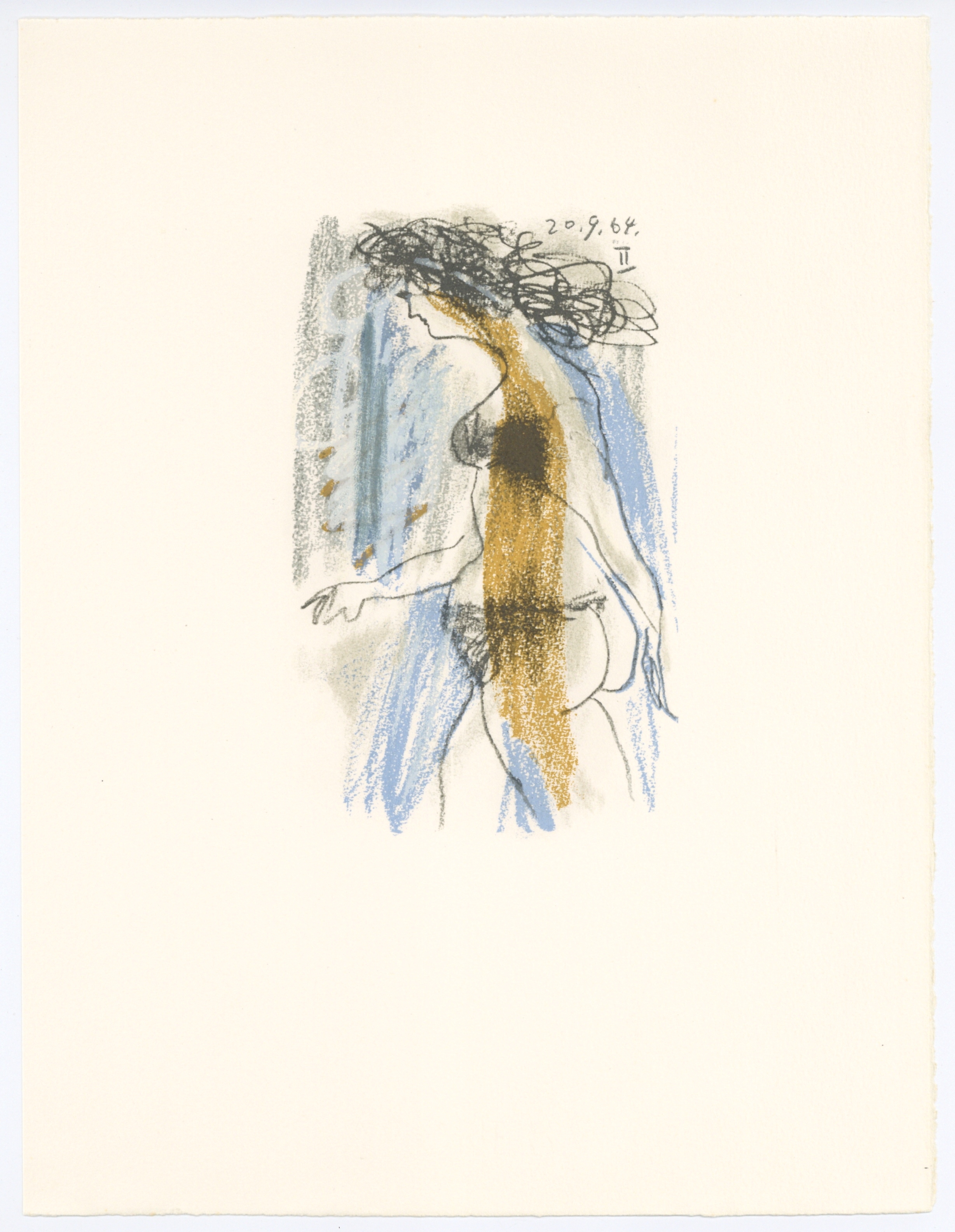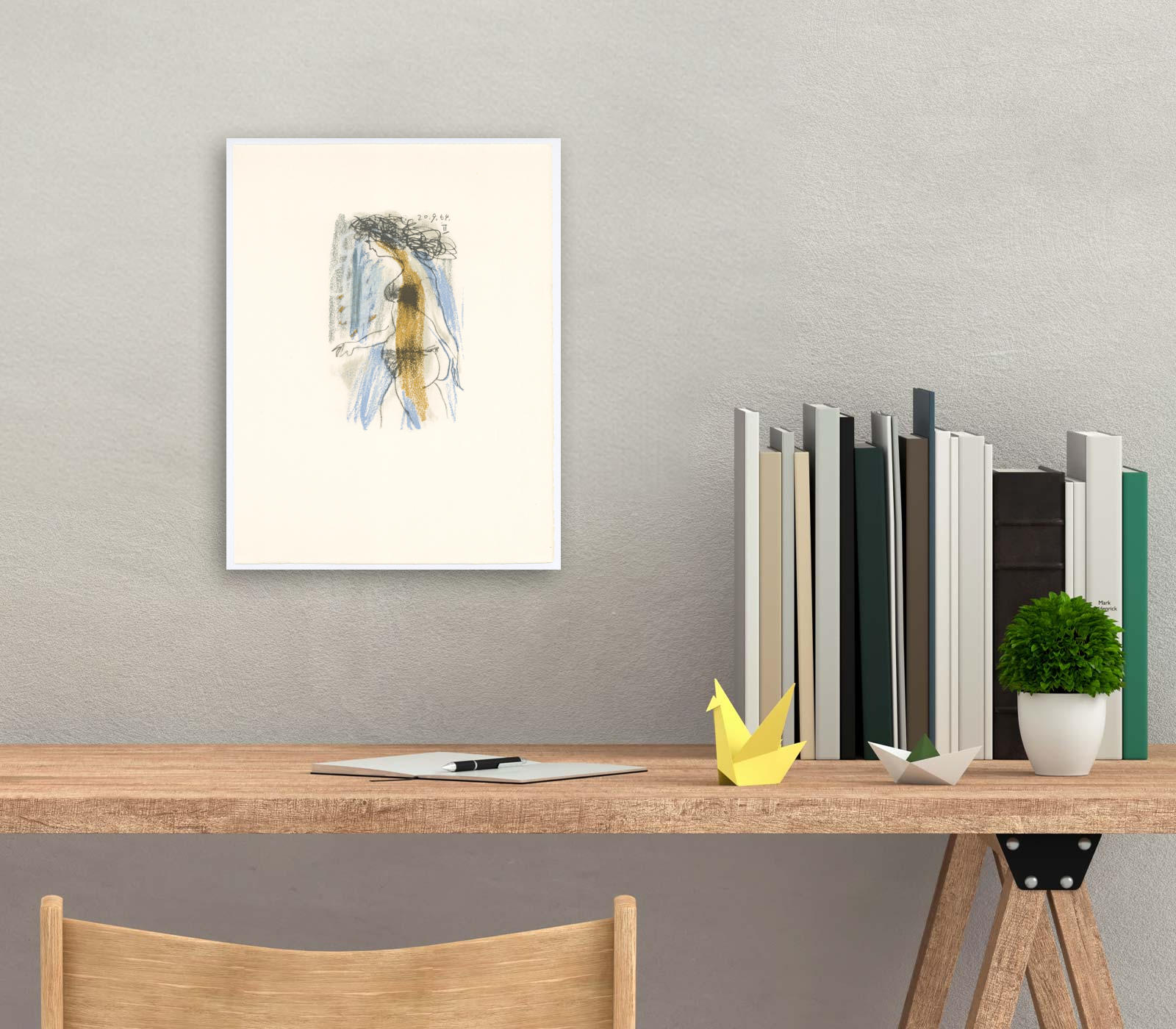Pablo Picasso lithograph "Le Gout du Bonheur"
Pablo Picasso
Pablo Picasso lithograph "Le Gout du Bonheur"
Artist:
Pablo Picasso
Medium: Prints
Price:
$400.00
Gallery:
Affordable Art 101
Add to Favorites
Free Shipping
Details
Creation Date: 1970
Materials: lithograph
Dimensions: 13" x 10"
Finish: Unframed
About the Item
Medium: lithograph (after the drawing). This Picasso lithograph from the "Le Gout du Bonheur" portfolio (the French title translates to "The Taste of Happiness") was printed in Munich in the studios of Guenther Dietz under the personal supervision of Picasso. It was published in 1970 in a limited edition of 666 by Editions Cercle d'Art and Harry Abrams. Printed on handmade Arches rag paper, the total sheet measures 13 x 9 3/4 inches (325 x 250 mm) and the image is 7 x 4 1/4 inches. Not signed.
According to the publisher, these lithographs were made "through a unique process that employs the same type of materials as used by the artist, instead of the usual printing inks. Grease crayon, lithographic tusche, lead pencil and charcoal are among the artist's materials used". The result is a truly rich and lifelike impression!
According to the publisher, these lithographs were made "through a unique process that employs the same type of materials as used by the artist, instead of the usual printing inks. Grease crayon, lithographic tusche, lead pencil and charcoal are among the artist's materials used". The result is a truly rich and lifelike impression!
About the Artist
Pablo Picasso
Pablo Picasso (1881-1973) was a Spanish painter, sculptor, printmaker, ceramicist, and stage designer who is widely regarded as one of the most influential artists of the 20th century. Born in Málaga, Spain, Picasso demonstrated extraordinary artistic talent from a young age. He moved to Paris in 1904, where he became a central figure in the avant-garde movement.
Picasso co-founded the Cubist movement, alongside Georges Braque, revolutionizing European painting and sculpture. His work is often categorized into periods, the most famous being the Blue Period, characterized by somber tones and subjects; the Rose Period, known for its warmer colors and circus themes; and the African art-inspired period, which led to the development of Cubism.
Picasso co-founded the Cubist movement, alongside Georges Braque, revolutionizing European painting and sculpture. His work is often categorized into periods, the most famous being the Blue Period, characterized by somber tones and subjects; the Rose Period, known for its warmer colors and circus themes; and the African art-inspired period, which led to the development of Cubism.
About the Gallery
Affordable Art 101
Affordable Art 101 offers an outstanding selection of works on paper by the great artists, ranging from the Old Masters to Modern Art and Pop Art, at affordable prices well within the budget of the average collector. In business since 2005, we specialize strictly in prints: etchings, lithographs, silkscreens, aquatints, mezzotints and woodcuts.
Similar Artworks
Similar Artists
More from this Seller








 Facebook
Facebook
 X
X
 Email
Email























